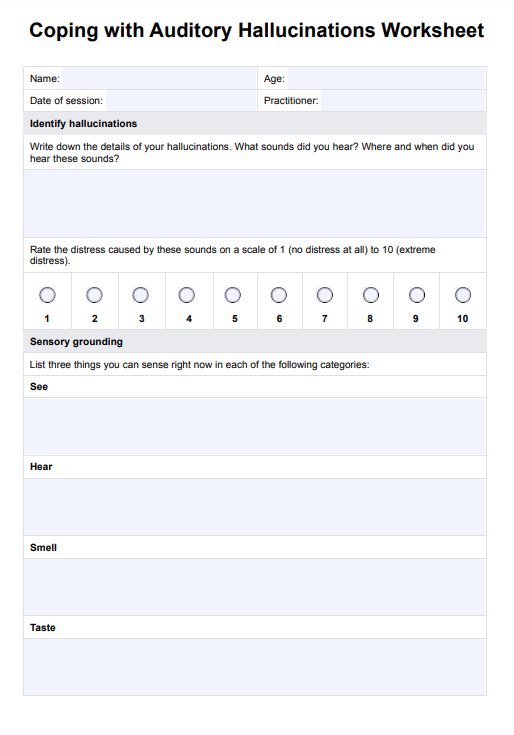To respond to auditory hallucinations, it's important to stay calm, practice grounding techniques, and use coping strategies like reality testing or distraction to manage the experience.

Coping with Auditory Hallucinations Worksheet
Support the management of auditory verbal hallucinations through the use of this worksheet to differentiate real sensations from hallucinations effectively.
Coping with Auditory Hallucinations Worksheet Template
Commonly asked questions
Avoiding hallucinations and hearing voices involves managing stress, adhering to prescribed medication regimens, maintaining a regular sleep schedule, and avoiding substances that can trigger hallucinations.
Hallucinations can be triggered by stress, sleep deprivation, substance use, mental health and psychotic disorders like schizophrenia, other psychotic symptoms, and certain medical conditions such as epilepsy or brain tumors.
EHR and practice management software
Get started for free
*No credit card required
Free
$0/usd
Unlimited clients
Telehealth
1GB of storage
Client portal text
Automated billing and online payments











